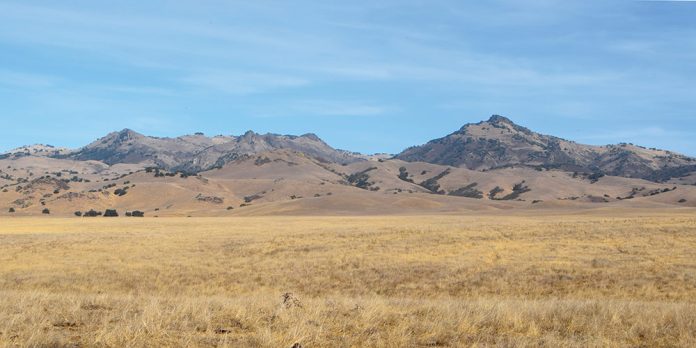Grassy pasture land off Santa Ana Valley Road east of Hollister played a part in winning World War II.
The Hollister 12th Naval District Target Number Five served as a training ground for U.S. Navy aviators to hone their skills in dive bombers from the summer of 1943 to the end of the war. Naval historians say the experience gained at Target Number Five played a role in the Allied victory over the Imperial Japanese Navy at the Battle of Leyte Gulf in October 1944.
The history of Target Number Five was directly tied to the Naval Auxiliary Air Station Hollister, now the Hollister Municipal Airport. Established on June 26, 1943, Naval Auxiliary Air Station Hollister served as a training ground for naval aviators due to its proximity to Monterey Bay, which was used for torpedo practice.
In June 1943, the Navy leased land on Santa Ana Valley Road from Mr. and Mrs. Paul J Hudner, which would become Target Number Five, according to a 2001 site survey report compiled by the Army Corps of Engineers.
Navy archive records describe Target Number Five as consisting of three targets, a 520-by-50-foot “cruiser,” a 180-by-20-foot “submarine,” and a 100-foot diameter circle with a 10-foot center. Instead of building replicas of the cruiser and submarine, the targets were 4-feet-wide lines of crushed white dolomite.
The bombs used at Target Number Five were like the Mk 15 Mod 3 Practice Bomb found in September embedded in the dirt of the city dog park at the airport.
Each practice bomb had a cylindrical body, a rounded nose and guide fins in the rear. Filled with wet sand, the bomb weighed 100 pounds. Rather than being armed with high explosives, the practice bombs filled with black powder and phosphorus produced a flash and white smoke to help indicate if the bombs hit their target.
The Hollister 12th Naval District Target Number Five was one of 30 rocket and bombing test sites used by the U.S. Navy in California and Nevada, which helped Navy personnel hone their targeting skills and test new ordinance.

The U.S. Navy dive bombers, particularly the CB2C Helldiver and the Douglas SBD Dauntless, played pivotal roles in the Pacific Theater in WWII, according to the Navy. Dive bombers dive at their target at a steep angle, up to a near vertical 80 degrees, to precisely land a bomb or torpedo on target.
At the Battle of Midway in June 1942, dive bombers from the USS Yorktown and USS Enterprise scored debilitating hits that sank four Japanese carriers, effectively turning the tide in the Pacific Theater. Later in the war at the Battle of Leyte Gulf, dive bombers, including crews who trained at Naval Auxiliary Air Station Hollister, struck and sunk several Japanese battleships, including the Yamato-class Musashi battleship.
At the end of the Navy’s lease on the San Benito County property, the U.S, government paid the Hudners $700 to restore bomb craters and removed a 16-ton pile of bomb fragments.
On Aug. 23, 2001, the Army Corp of Engineers, while performing a site survey, met with property owner Tom Grant; Tom Stirewalt, who leased the land at the time; and John Trebino, who grew up in the area. Stirewalt told the Army Corps he recalled watching the bombings with his cousin while sitting on a bend in Lone Tree Road. Stirewalt also remembered soldiers sentenced to pick up bomb fragments on weekends as punishment for going AWOL.
Trebino also called watching the bombings as a child, and to his recollection, the Navy did not use high explosives on Target Number Five. At the time of the interview, Trebino retrieved a 13-lb. broken MK practice bomb.
Today Target Number Five serves as pasture land near Lightning Tree Ranch on Santa Ana Valley Road. Now the home of cattle, the site seems like an unlikely place that played a role in history. Like the soldiers who served in WWII, it has done its service, and now rest peacefully.










